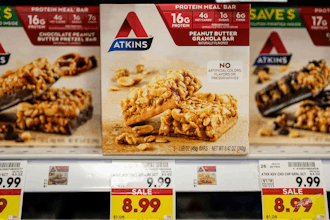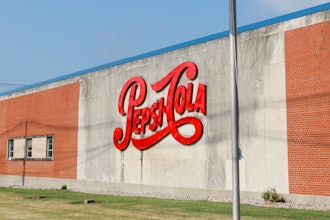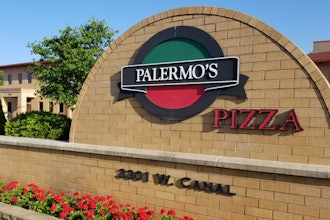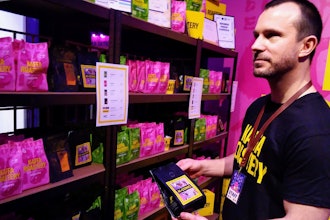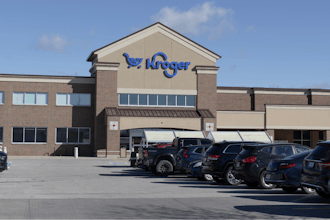C-suites are often out of touch with the struggles of employees on the forefront — especially as they relate to an increasingly data-rich landscape driven by digital innovation. As traditional big-picture thinkers, those within the C-suite may not be focused on innovative digital technologies.
Recipe-based food and beverage manufacturers are no exception to this trend. The divide between frontline employees and the C-suite makes it difficult for lower-level decision makers to advocate for the technologies they know will improve the lives of employees and customers.
Employees outside of the C-suite have firsthand, daily exposure to company operations and processes, making them well equipped to speak to company technology needs.
Food engineers, research and development (R&D) teams and departmental leaders all see immense value in product lifecycle management (PLM) solutions. But C-suiters are often preoccupied with higher level investments, and do not realize the value of surveying the entire landscape for solutions that offer real, lasting benefits.
As an employee advocating for the value of a technology process solution, how can you elevate your voice to the C-suite? It's simple — just focus on ROI.
Speaking The C-Suite Language
Regardless of title, all employees share the same goal — business success.
However, not everyone is on the same path to achieving that goal. Employees who first recognize the value in PLM are usually high-ranking information, technology or manufacturing personnel. These tech vanguards understand the importance of improving traceability and transparency standards, which makes investing in seamless, end-to-end, data technology processes the obvious choice to achieve greater business success.
Conversely, the C-suite is focused primarily on the wider view — leading operations, quality assurance, sales, accounts payable and purchasing; not to mention overall business strategies, development, budget and capital oversight.
Consider research from The Conference Board to get a clearer picture of the current C-suite. Around the world, CEOs, CFOs and CHROs feel the pressure to create business models that can keep up with disruptive technology trends. But what's most telling is that less than 10 percent of CEOs are "extremely satisfied" with their organization's current innovation capabilities.
These findings reveal that C-suites are interested in change, especially technology-driven growth. However, company leaders in the margin-sensitive food and beverage industry are also very concerned about ROI. That means that to turn C-suite skeptics into PLM advocates, you must present strategic, realistic ROI cases for new technology solutions.
Two Strong ROI Cases For PLM Solutions
To secure executive support for new technology investments, you must think like an executive. C-suiters don't automatically know that PLM solutions create ROI, so it's up to you to change their perspective. Try linking PLM investments back to both immediate and long-term ROI drivers.
Immediate ROI
Members of the C-suite are responsible for pushing forward growth. To them, that means generating revenue, earning customer loyalty and reducing process costs throughout the entire supply chain.
PLM solutions offer all of these benefits — and more — at quick-to-market speeds, but just not in the terms CEOs are accustomed to. For example, consumer focus has broadened and most shoppers care about more than just low prices and commerce conveniences. They also have heightened expectations for, and the right to, accurate, comprehensive product information available on menus, labels and more.
Data-driven PLM solutions ensure products always have the up-to-date information shoppers demand. For brands, this is a huge opportunity to generate long-term loyalty. In fact, 94 percent of consumers are more likely to be loyal to a brand that offers full product transparency. This is especially important to food and beverage manufacturers, where brand loyalty extends across product categories.
PLM process solutions also help recipe-based food and beverage manufacturers pivot quickly, meeting the C-suite's goal of reducing costs and remaining agile.
For example, certifications for dietary labels — like kosher, Halal or allergen free — can be exceptionally fluid, and they impact the majority of product lines. If manufacturers do not follow changes along their supply chains, they will likely miss an error in labeling, design, IT or elsewhere. This can result in regulatory compliance issues, or even worse, illness for those who consume the product. But housing all product information in an end-to-end PLM system makes it easy to reflect changes in derivative products and benefit from quality assurance.
Long-term ROI
A top stressor for the C-suite at all manufacturing companies – and for the food and beverage industry in particular – is downtime. Every minute a manufacturer cannot produce products means millions of dollars lost.
In the case of an E. coli outbreak, for instance, the responsible manufacturer must shut down until it locates the defective ingredients or resolves the issue. In addition to the missed revenue during this time, the business also suffers untold damage in lost consumer trust and loyalty.
Fortunately, a PLM system provides an analytical, data-driven process that allows manufacturers to trace products back throughout their entire lifecycle. This makes it easier to pinpoint where production errors occurred, down to the individual piece of machinery used. After a recall, access to such specific information helps recipe-based food and beverage manufacturers comply with regulatory agencies and get back on their feet more quickly.
Finally, PLM solutions empower brands to use their data as a strategic asset. PLM technologies build comprehensive, accurate data reports that manufacturers can trust, available both on premise and in the cloud. The process solution makes it possible to spot data trends across geographies and rapidly act on them, which leads to enhanced revenue. This helps the R&D team and food engineers who work with multiple recipe trials avoid making the same production errors twice, eliminating lost time and materials and boosting ROI.
Data applications that enhance processing, packaging and labeling offer tangible, compound benefits to the savvy manufacturer. Unlike many technologies where value decreases with time and age, PLM solutions offer food and beverage manufacturers powerful, long-term benefits.
Additional Strategies To Convey ROI To The C-Suite
Remember that recipe-based food and beverage manufacturers often operate at a lower PLM maturity, so comprehensive, accurate information is essential when speaking with your C-suite.
It can prove beneficial to take ROI conversations one step further and highlight areas where PLM investments build value beyond product development. For example, top PLM vendors offer ongoing assistance via project management teams, resulting in additional ROI from support staffers with unique industry expertise.
An ROI calculator is an exceptionally powerful tool to illustrate tangible benefits and overall value to your C-suite. ROI calculators can jumpstart technology plans at companies where resistance to change is high and ignite the metric-focused mindset required to properly support data-driven improvements.
No matter the method you choose to motivate your C-suite, ROI must always be at the center of your PLM conversations.
Severin Weiss is CEO of SpecPage










